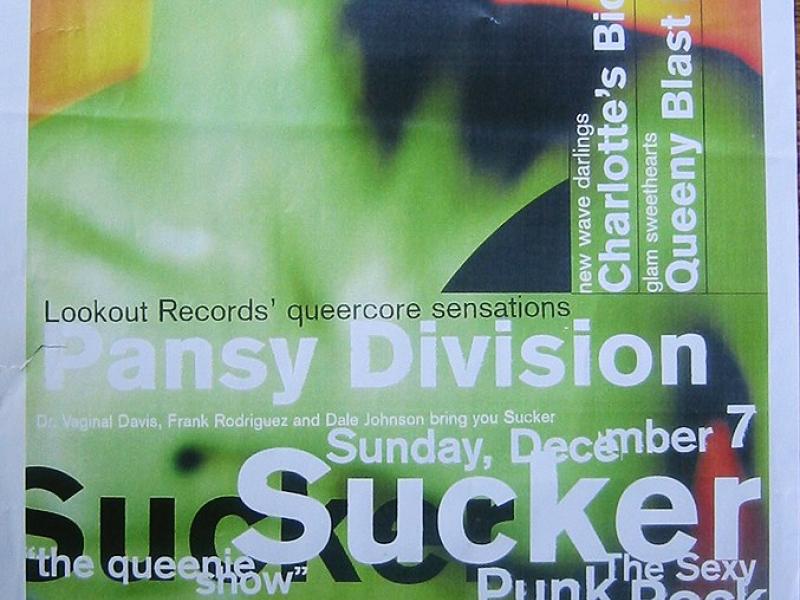"The Garage attracts a seething crowd on the weekends," wrote club critic Billy "Eye" Bennight at the time. "Don't be surprised by what you see, or who you see, doing what in the dark. The place is hardcore." The first Garage didn't last long, plagued by noise and permit problems. It reopened a few years later as a pre-rave dance club.

Abstract
Queercore originated in Toronto in the 80s with the creation of a zine called “J.D.s”. Founded by G. B. Jones and Bruce LaBruce, J.D.s was motivated by their personal experiences of adversity amidst the mainstream punk scene. Queercore, not exactly a subgenre of punk, but rather a divergent response to the sexism and homophobia of the punk scene, sought to not only dismantle these prejudices amidst the punk scene but also speak out against the growing conservatism of the gay and lesbian mainstream. Artists involved in the queercore scene in Los Angeles in the 90s include Best Revenge (Spitshine Records), IAMLoved, Nick Name and The Normals (aka Kent James), Vaginal Davis, Limp Wrist, Three Dollar Puta, and Sean DeLear. While the heyday of queercore was the 1980s and 1990s, queer punk did not begin or end with queercore. Important predecessors to the queercore movement include Jayne County, punkster-turned-folkster Phranc, and the films of Divine and John Waters. Likewise, today the spirit of queercore continues with its its post-punk, riot grrrl, and indiepop contemporaries including Shopping, Wolf Girl, G.L.O.S.S., Peaches, Martha, ONSIND, Gravy Train!!!!, Colour Me Wednesday, Guttfull, and PWR BTTM. Zines like Shotgun Seamstress and films like The Lollipop Generation (G.B. Jones, 2008) have also carried on the queercore torch of its predecessors Scutter and Spew2.
Content
Places